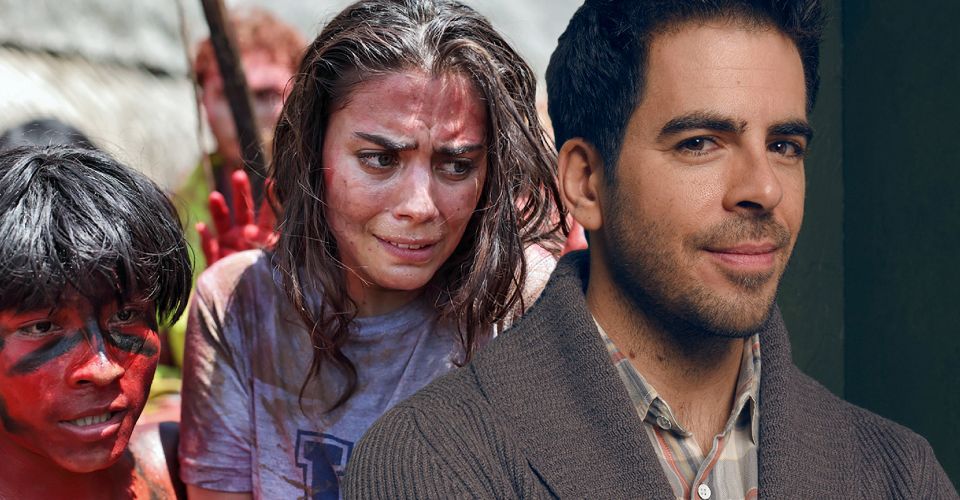Why Eli Roth’s Green Inferno Was So Controversial

Eli Roth’s The Green Inferno is controversial for several reasons, one of which being his depiction of Indigenous peoples and their culture. The cannibal horror movie showcases what the director does best — blood, gore, and torture. While it received relatively mixed reviews, viewers were and continue to be rather critical of the its contents due to the egregious depiction of indigenous people on a multitude of levels.
The Green Inferno follows a group of socially conscious young adults who travel to the Amazon rainforest in order to stop a major corporation from stripping it of its natural resources. Shortly following their arrival, they become the targets of an indigenous tribe that brutally torture them, force them to eat human flesh, and eventually have their bodies dismembered. It’s arguably one of the most obscenely violent movies of the 21st century, which comes as no surprise considering its director is partially known for the creation of “torture porn”, an extreme sub-genre of horror. These movies commonly depict excessive amounts of violence with themes of sexuality mixed into it. Roth’s filmography is almost entirely composed of this sub-genre with movies including Hostel, Knock Knock, and Cabin Fever.
The cannibals featured in The Green Inferno are unlike any other in the horror genre. Since the 1970s, cannibalism has been a staple of Italian exploitative movies in particular. Roth is a notable fan of exploitation flicks, as he used Death Game as the inspiration behind Knock Knock. While zombie movies are commonly defined as being part of the cannibal sub-genre, they’re entirely different. While the undead crave human flesh, cannibals kill and eat people in order to survive rather than out of an inexplicable desire to do so. Some of the genre’s most notable cannibals are those in the Wrong Turn franchise, but, even with their notoriety, they aren’t considered part of the very small sub-genre of exploitative cannibal movies. Roth and other filmmakers commonly use Indigenous peoples in their movies, which results in an inaccurate and wrongful depiction of these communities. Occasionally, these types of films spark controversy, and The Green Inferno was no exception.

Cannibal movies commonly feature social and political commentary regarding a culture outside of the Western world of thought. Every single culture is unique in itself. When a group of college-educated social activists go to fight to save the rainforest and preserve the communities that live in the Amazon, it’s perceived as a just cause, which it is, but Roth uses it to juxtapose Western schools of thought with Indigenous communities. In turn, these characters gain a savior identity while the Indigenous community is demonized for their practices. Rather than sympathize with the people who are losing their land and being invaded by this group of social activists, they’re lumped into a box that makes the viewer conclude that they’re nothing but their stigma as “savages.”
Roth has argued against these claims, as he views his movie as an exploitative work of fiction with a fictionalized Indigenous community, but it’s still harmful. Movies like The Green Inferno perpetuate and support colonialist ideologies where white people or those who align themselves with Western culture believe that they are doing communities that are tribal, third world, or non-Western a favor by saving them from their environments. This removes the autonomy from Indigenous people who choose to live in voluntary isolation. By demonizing them and painting their tribe as nothing but aggressive, uneducated, savage, and forcefully disconnected from society, the Indigenous peoples in The Green Inferno become an egregious and false depiction of what actually happens within these communities.
It could be argued that Roth showcases the importance of acknowledging that colonization is bad through the deaths of the social activist group members, but it isn’t a very sound argument. Ultimately, the movie is overly exploitative of a culture that the director has no known experience with firsthand, and takes advantage of for the sake of exploitation. The Green Inferno‘s depiction of Indigenous peoples only gets worse with time, as it continues to underscore the importance of their autonomy.
About The Author

















